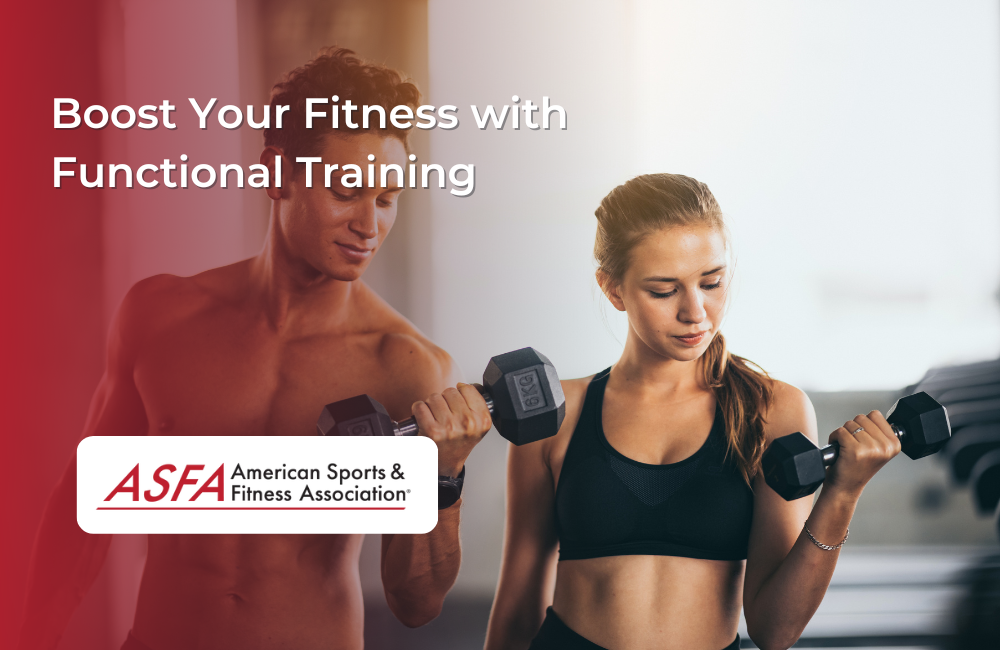Functional training is a way of working out that focuses on the movements, actions, and skills that you'll use in real life. It's designed to make your body stronger, more flexible, and healthier overall.
functional training builds strength through muscle coordination. The exercises are designed to mimic everyday movements; this helps your muscles learn how to work together properly during movement so they're more efficient in real-life activities
Functional training is a way of working out that focuses on the movements, actions, and skills that you'll use in real life.
Functional training is a way of working out that focuses on the movements, actions, and skills that you'll use in real life. Functional training exercises can help you build strength, improve balance and coordination, prevent injury, and boost your overall health.
Functional fitness has many benefits for people of all ages:
- It improves your ability to do everyday tasks such as lifting groceries or carrying luggage through an airport.
- It reduces the risk of injury by strengthening muscles around joints so they're better able to support you during movement (like when walking up stairs).
- It helps improve posture by focusing on core muscles that support the spine--which can help reduce back pain caused by poor posture over time!
Functional training works your entire body.
Functional training works your entire body. It improves your balance and stability, increases your range of motion, improves posture, strengthens core muscles, and improves your overall fitness level. Functional training can be done anywhere with or without equipment -- even if you're injured!
It's easy to work around injuries while doing functional training because it doesn't put any undue stress on one part of the body over another (i.e., no heavy lifting). You don't need any special equipment other than a couple of dumbbells or kettlebells at most; however, there are some great options out there like suspension bands that make working out fun again!
Functional fitness has been shown to improve strength in all areas including arms/shoulders; back/chest; legs/glutes (buttocks); abdomen area which includes abs & lower back muscles - all important areas for staying healthy throughout life stages such as pregnancy & menopause when hormone levels fluctuate greatly causing various aches & pains along with weakness issues due constant hormonal changes happening inside our bodies every day 24 hours per year 365 days per decade etc...
You may want to work with a personal trainer.
If you're serious about getting fit, a personal trainer can be an extremely helpful resource. Personal trainers help clients set fitness goals and design exercise routines that are tailored to their needs. They also provide guidance on form and technique, which is especially important for beginners who may not know how to properly perform certain exercises.
Personal trainers will often work with clients one-on-one or in small groups (depending on their experience level), but they can also be hired as part of larger classes led by other instructors at gyms or studios throughout the country. These classes are typically designed around a specific type of workout--think yoga or Pilates--and include both cardio exercises like running around the block or cycling on stationary bikes as well as strength training moves like lifting free weights over your head.*
The benefits of functional training are numerous: it improves your endurance; makes everyday tasks easier; reduces pain caused by injury; helps prevent injury altogether by strengthening muscles before they get strained too far past their limit during physical activity.*
Work out with free weights.
Free weights are the best way to build muscle and burn fat.
They can be used in a variety of ways, which makes them great for beginners who are still learning how to use their body weight effectively.
There are many different exercises you can do with free weights, including squats, lunges, and step-ups; overhead presses; rows (both bent over rows and seated cable rows); triceps extensions; bicep curls; lateral raises and front raises (for deltoids).
Takeaway:
- Boost your fitness by incorporating functional exercises into your workout routine.
- Try to do the following:
- Squatting, lunging, and bending over to pick things up are all great ways to build strength in the lower body and core.
- Pressing overhead is a great way for upper body strength, as well as shoulder stability.
- Balance and coordination are also important factors when it comes to functional training; try standing on one leg while doing bicep curls or squats!
Conclusion
If you're looking for a way to get in shape, functional training is a great option. It can help you improve your fitness level and reduce the risk of injury by focusing on real-world activities like lifting weights or doing squats. Plus, it works your entire body instead of just one muscle group at a time like traditional exercises do! If this sounds like something that interests you then we recommend working with an experienced personal trainer at least once before starting on your own --





